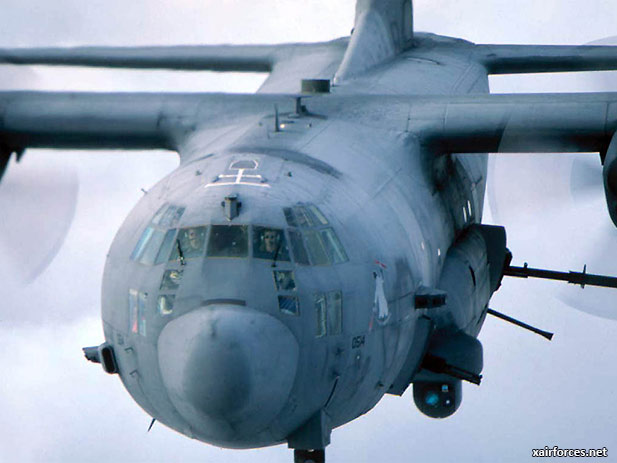
Goodbye AC-130H Spectre

The U.S. Air Force is mothballing its last eight AC-130H gunships. Only 47 AC-130 gunships have been built, the first of them, the AC-130A, entering service in 1968.
Some were upgraded to AC-130Es. Eleven were upgraded to AC-130H in 1972 and the eight surviving aircraft of that group are now being retired, not scrapped. They will be put in storage, just in case. The air force still has 17 AC-130Us that entered service in the early 1990s and are still operational. The AC-130U has an additional 25mm autocannon and the capability to track more than one target at a time. The last AC-130A was retired in 1995.
The AC-130H gunship (nicknamed Spectre) is a 69 ton, four engine aircraft armed with two 20mm machine-guns, a 40mm autocannon and a 105mm howitzer. While the aircraft can stay in the air for six hours (or more, if it refuels in the air), what really makes a difference is how well the weapons operate. Flying low (often under 3,000 meters\10,000 feet) and at night, the gunship relies on night vision devices and well trained gunners to take out targets that are giving the troops on the ground a hard time. Four decades of continuous improvements have made the gunships increasingly lethal.
The AC-130J is replacing the AC-130Hs. The U.S. Air Force recently bought 16 C-130J transports, for $100 million each for conversion into AC-130J gunships. Equipping the new gunships will nearly double the price, and the first one won't be in service until 2017. The 79 ton C-130J has a top speed of 644 kilometers, 40 percent more range than the C-130H, and can carry 25 percent more cargo. The C-130J transport proved to be more than just another model in the fifty year old C-130 design. Mainly because it's cheaper and easier to use. Like most new commercial transports, the C-130 emphasizes saving money. The new engines generate 29 percent more thrust while using 15 percent less fuel. Increased automation reduced crew size from four to three. The C-130J is more reliable and easier to maintain.
The AC-130J will be equipped with more powerful sensors, and armed with a single 30mm autocannon, and multiple launchers for Viper Strike and Griffin guided missiles (and perhaps the larger Hellfire as well). Viper Strike is a 90cm (36 inch) long unpowered glider. The 130mm diameter (with the wings folded) weapon weighs 20 kg (44 pounds). Because the Viper Strike comes straight down, it is better suited for urban warfare. Its warhead weighs only 1.8 kg (four pounds), and less than half of that is explosives. This means less damage to nearby civilians, but still powerful and accurate enough to destroy its target. A laser designator makes the Viper Strike accurate enough to hit an automobile, or a foxhole.
The Griffin is a 15.6 kg (34.5 pound) guided missile with a 5.9 kg (13 pound) warhead which is larger than that carried by the larger (47 kg) Hellfire missile. To achieve this, Griffin has a shorter range (4 kilometers), which is adequate for a gunship, which is designed to go after targets just below it, not far away.
U.S. SOCOM (Special Operations Command) has also adopted a U.S. Marine Corps idea to provide an "instant gunship" system, which enables weapons and sensors to be quickly rolled into a C-130 transport and hooked up. This takes a few hours and turns the C-130 into a gunship armed with a 30mm autocannon and Viper Strike and Griffin missiles.
Because of their vulnerability to ground fire, the AC-130s only operated at night until quite recently. The last time an AC-130 was lost was at Khafji, Saudi Arabia, during the 1991 Persian Gulf War. The aircraft was leaving the combat zone at sunrise, and was visible to Iraqi gunners in the area. With the introduction of missiles like Hellfire, Viper Strike and Griffin it’s now possible for AC-130s to operate during daylight. That’s because the missile equipped AC-130 can fly high enough (6,200 meters/20,000 feet) to be out of range of most anti-aircraft weapons.
Source: strategypage.com News – 1 April 2014
Photo: The U.S. Air Force AC-130H Spectre Gunship Aircraft (Photo by United States Air Force)
(1.04.2014)
|